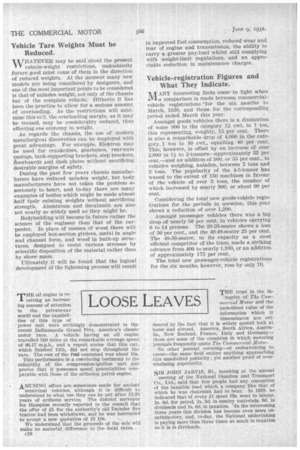Vehicle-registration Figures and What They Indicate.
Page 40

If you've noticed an error in this article please click here to report it so we can fix it.
Air ANY interesting facts come' to light when -1-Vla. comparison is made between commercialvehicle registrations vf or the six months to March, 1930, and those. for the corresponding period ended March this year.
Amongst goods vehicles there is a diminution of some 900 in the category 12 cwt. to 1 ton, this representing, roughly, 15 per cent. There is also a remarkable drop of 4,000 in the category, 1 ton to 30 cwt., equalling 40 per cent. This, however, is offset by an increase of over 2,000 in 11. to 2-tonners—approxiniately 33 per cent.—and an addition of 900, or 55 Per cent., in vehicles weighing, Unladen, between 2 tons and 3 tons. The popularity of the 4-5-tonner has waned to the -extent of 150 machines in favour of the vehicle of over 5 tons, the number of which increased by nearly 300, or about 90 per cent. , Considering the total new goods-vehicle registrations for the periods in question, this year shows a reduction of over 1,200.
Amongst passenger vehicles there was a big drop of nearly 50 per cent. in vehicles carrying 8 to 14 persons. The 20-26-seater shows a loss of 30 per cent., and the 40-48-seater 25 per cent. The 48-56-seater, in its capacity as a most efficient competitor of the tram, made a striking advance from 400 to nearly 1,100, or an addition of approximately 175 per cent.
The total new passenger-vehicle registrations for the six months, however, rose by only 70.












































































































